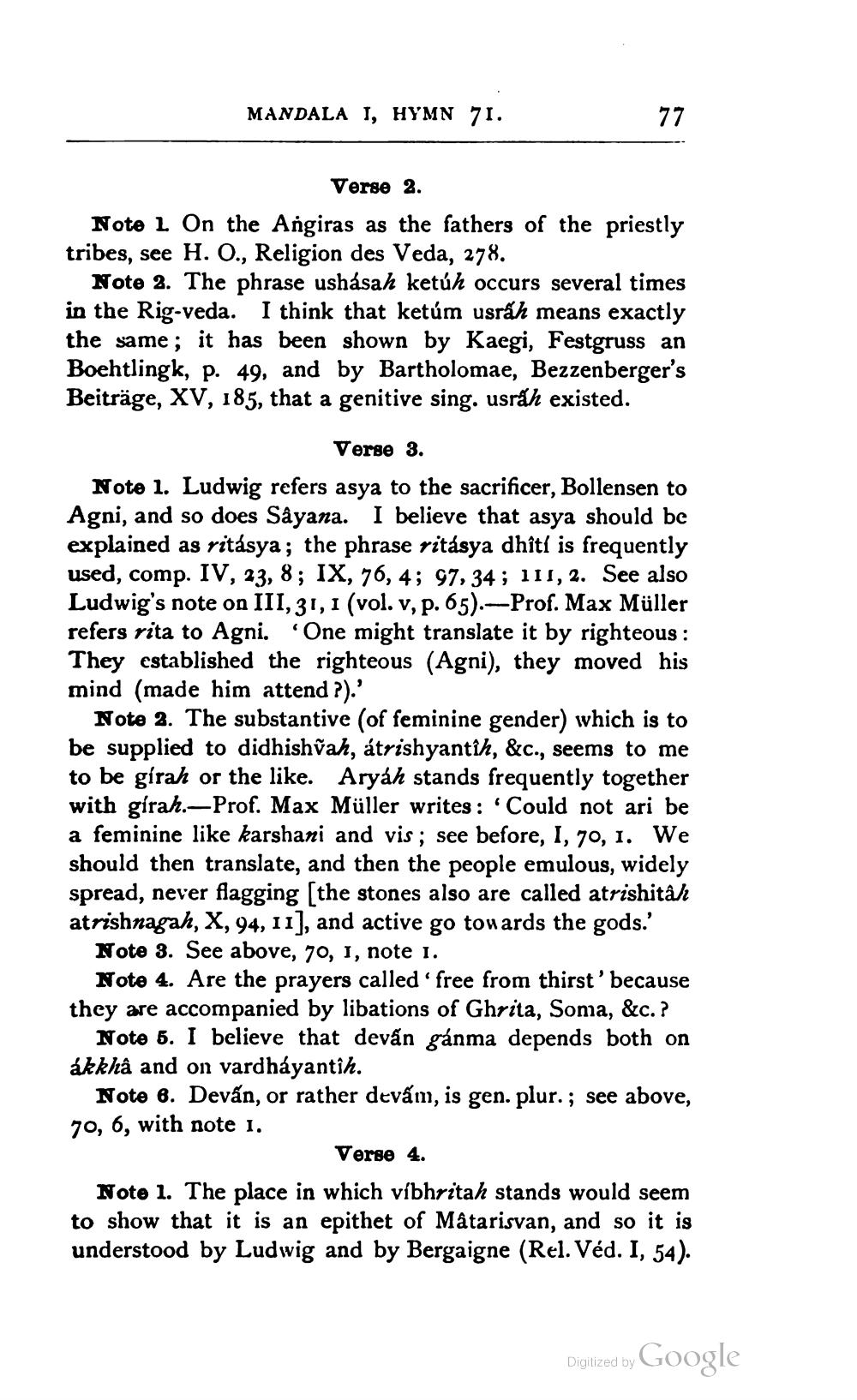________________
MANDALA I, HYMN 71.
77
Verse 2.
Note 1 On the Angiras as the fathers of the priestly tribes, see H. O., Religion des Veda, 278.
Note 2. The phrase ushásah ketúh occurs several times in the Rig-veda. I think that ketúm usrah means exactly the same; it has been shown by Kaegi, Festgruss an Bochtlingk, p. 49, and by Bartholomae, Bezzenberger's Beiträge, XV, 185, that a genitive sing. usrah existed.
Verse 3.
Note 1. Ludwig refers asya to the sacrificer, Bollensen to Agni, and so does Sâyana. I believe that asya should be explained as ritásya; the phrase ritásya dhîtí is frequently used, comp. IV, 23, 8; IX, 76, 4; 97, 34; 111, 2. See also Ludwig's note on III, 31, 1 (vol. v, p. 65).-Prof. Max Müller refers rita to Agni. One might translate it by righteous: They established the righteous (Agni), they moved his mind (made him attend?).'
•
Note 2. The substantive (of feminine gender) which is to be supplied to didhishvah, átrishyantîh, &c., seems to me to be gírah or the like. Aryáh stands frequently together with gírak.-Prof. Max Müller writes: 'Could not ari be a feminine like karshani and vis; see before, I, 70, 1. We should then translate, and then the people emulous, widely spread, never flagging [the stones also are called atrishitâ/ atrishnagah, X, 94, 11], and active go towards the gods.'
Note 3. See above, 70, 1, note 1.
Note 4. Are the prayers called 'free from thirst' because they are accompanied by libations of Ghrita, Soma, &c.?
Note 5. I believe that devấn gánma depends both on ákkhâ and on vardháyantih.
Note 6. Devấn, or rather devam, is gen. plur.; see above, 70, 6, with note 1.
Verse 4.
Note 1. The place in which víbhritah stands would seem to show that it is an epithet of Mâtarisvan, and so it is understood by Ludwig and by Bergaigne (Rel. Véd. I, 54).
Digitized by Google




